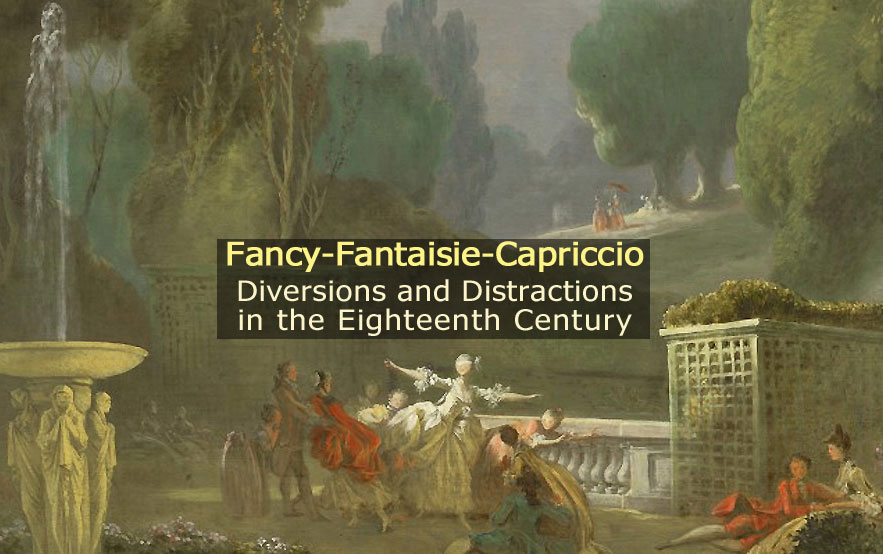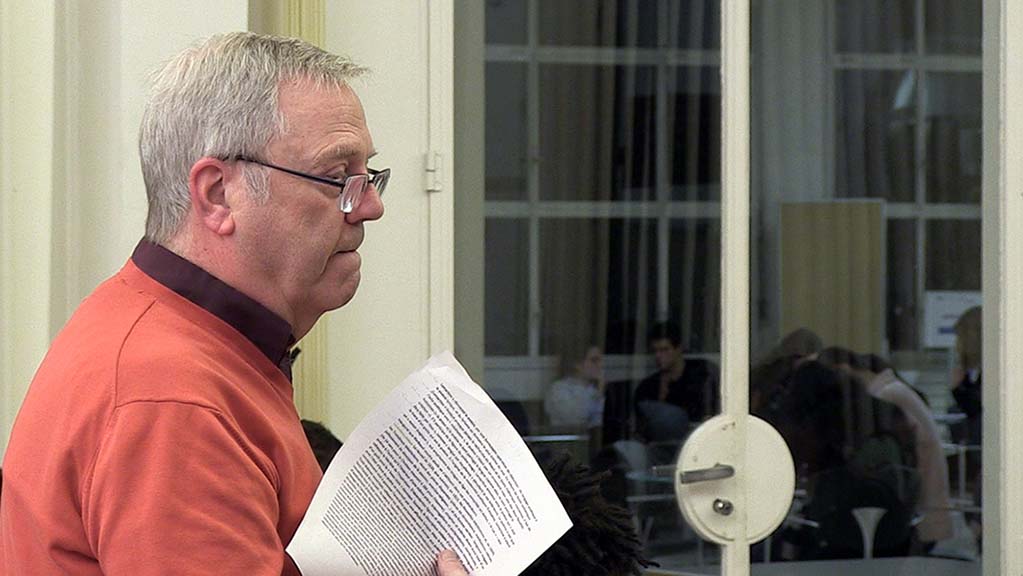Notice
British Capricci: from the Picturesque to the Sublime / Hélène Ibata
- document 1 document 2 document 3
- niveau 1 niveau 2 niveau 3
Descriptif
British Capricci: from the Picturesque to the Sublime / Hélène Ibata, in colloque international organisé, sous la responsabilité scientifique de Muriel Adrien, Melissa Percival et Axel Hémery, par l’Université Toulouse Jean Jaurès et l’Université d’Exeter. Toulouse, Musée Paul-Dupuy, 3-4 décembre 2015.
British adaptations of the capriccio genre may be seen not only as a response to the contemporary British discourse on the sublime and the picturesque, but also asthe reflection of a significant shift in sensibility. While in the second half of the eighteenth century, a ‘picturesque’ approach prevailed, with ruins being used as pleasing -albeit melancholy- sources of reverie and association of ideas, a more tragic sense of history emerged at the beginning of the nineteenth century, and ruin painting became more frequently a vehicle of the sublime. In the works of Joseph Gandy, J.M.W. Turner and Charles Robert Cockerell, among others, ruins are dramatized, often emptied of human presence, and invested with the terrifying awareness of the transience of all things. In these dramatic capricci, architectural excess becomes overwhelming rather than exuberant, and vestiges are often “ruins of empires”, reminders of the ravages of time and of the vanity of all human achievements. I would like to explorethis evolution and show in particular how with artists seeking the sublime, the capriccio becomes an effective means to convey the tension between visual representation and what exceeds it, which is central to this aesthetic mode.
Intervention / Responsable scientifique
Thème
Documentation
Références documentaires
IBATA, Hélène (2015). Theories of the sublime and the matter of pictorial closure, in Thomas Constantinesco, Sophie Laniel Musitelli (dirs), Romanticism and the philosophical tradition, Presses Universitaires de Nancy, 247-261.
Musée des Augustins (2015). Ceci n'est pas un portrait. Figures de fantaisie de Murillo, Fragonard, Tiepolo..., Dossier de presse de l'exposition. Toulouse, Musée des Augustins, novembre 2015-mars 2016, 29 p. [En ligne : http://www.augustins.org/documents/10180/26194115/Dossier_presse_figures_fantaisie.pdf].
ASHFIELD, Andrew, DE BOLLA, Peter (dirs) (1996). The Sublime: A Reader in British Eighteenth-Century Aesthetic Theory. Cambridge University Press, 314 p.
WALPOLE, Horace (1786). Anecdotes of Painting in England: with some account of the principal artists and incidental notes on other arts; collected by the late Mr. George Vertue. London, Printed for J. Dodsley, 4e édition. [En ligne : https://catalog.hathitrust.org/Record/007708490].
BECKFORD, William (1783). Dreams, Waking Thoughts and Incidents in a Series of Letters from Various Parts of Europe. [En ligne : http://beckford.c18.net/wbdreams1.html].
> Voir aussi la bibliographie à télécharger dans l'onglet "Documents".
Dans la même collection
-
Modelling for the Fancy Picture: fact, fiction and fantasy / Martin Postle
PostleMartinModelling for the Fancy Picture: fact, fiction and fantasy / Martin Postle, in colloque international "Fancy‒Fantaisie‒Capriccio. Diversions and Distractions in the Eighteenth Century" organisé, sous
-
Fancying Nature: the posterity of Joseph Addison’s ‘Pleasures’ in English Enlightenment culture / F…
OgéeFrédéricFancying Nature: the posterity of Joseph Addison’s ‘Pleasures’ in English Enlightenment culture / Frédéric Ogée, in colloque international "Fancy‒Fantaisie‒Capriccio. Diversions and Distractions in
-
The many peopled wall: Fancy Pictures and Annual Exhibitions in Eighteenth-Century London / John Chu
ChuJohnThe many peopled wall: Fancy Pictures and Annual Exhibitions in Eighteenth-Century London / John Chu, in colloque international organisé, sous la responsabilité scientifique de Muriel Adrien, Melissa
-
Le coq et le léopard. Portrait et petite histoire des collections de peintures britanniques du musé…
FaroultGuillaumeLe coq et le léopard. Portrait et petite histoire des collections de peintures britanniques du musée du Louvre / Guillaume Faroult, in colloque international organisé, sous la responsabilité
-
Figures de fantaisie de Jean-Baptiste Santerre et limites des cadres génériques d’interprétation / …
Faure-CarricaburuEmmanuelFigures de fantaisie de Jean-Baptiste Santerre et limites des cadres génériques d’interprétation / Emmanuel Faure-Carricaburu, in colloque international organisé, sous la responsabilité scientifique
-
La production gravée parisienne au cœur de l’invention d’un genre ? Les «fantaisies» de Poilly et C…
GuillouetChristopheLa production gravée parisienne au cœur de L’invention d’un genre ? Les «fantaisies» de Poilly et Courtin (1710–1728) / Christophe Guillouet, in colloque international organisé, sous la
-
‘As Whimsical and Chimearical as their Forms Are’ : Ornamental and Fanciful Motives in English Draw…
PavotBénédicte‘As Whimsical and Chimearical as their Forms Are’ : Ornamental and Fanciful Motives in English Drawing Books / Bénédicte Miyamoto, in colloque international organisé, sous la responsabilité
-
De la fantaisie des éventails aux éventails de fantaisie / Pierre-Henri Biger
BigerPierre-HenriDe la fantaisie des éventails aux éventails de fantaisie / Pierre-Henri Biger, in colloque international organisé, sous la responsabilité scientifique de Muriel Adrien, Melissa Percival et Axel
-
"A Butterfly Supporting an Elephant": Chinoiserie in Eighteenth-Century England, or "the Luxuriance…
Alayrac-FieldingVanessa"A Butterfly Supporting an Elephant": Chinoiserie in Eighteenth-Century England, or "the Luxuriance of Fancy" / Vanessa Alayrac, in colloque international organisé, sous la responsabilité scientifique
-
Réminiscences vénitiennes et hybridité culturelle dans les vues et capricci anglais de Canaletto / …
CervantesXavierRéminiscences vénitiennes et hybridité culturelle dans les vues et capricci anglais de Canaletto / Xavier Cervantes, in colloque international organisé, sous la responsabilité scientifique de Muriel
-
Du cabinet privé à la villa suburbaine : caprices et fantaisies artistiques dans la capitale des Lu…
Fernández AlmogueraAdriánDu cabinet privé à la villa suburbaine : caprices et fantaisies artistiques dans la capitale des Lumières espagnoles / Adrián Fernández Almoguera, in colloque international organisé, sous la
-
Fancy a Garden? The Hortulean Pleasures of Imagination and Virtuality / Laurent Châtel
ChâtelLaurentFancy a Garden? The Hortulean Pleasures of Imagination and Virtuality / Laurent Châtel, in colloque international organisé, sous la responsabilité scientifique de Muriel Adrien, Melissa Percival et
Sur le même thème
-
Le musée Léon Dierx, la plus importante collection impressionniste d’outre-mer 3/4
Brunet-MalbrancqJoëlleLeveneurBernardLes Causeries de la culture : le Musée Léon Dierx, 110 ans de collections exceptionnelles #3 - Du romantisme à l’impressionnisme
-
Le romantisme II - Les thèmes, les représentants majeurs et les œuvres essentielles (par Gérard Gen…
GengembreGérardL'ampleur de la sphère romantique englobe des thématiques diverses, liées à l'histoire et à la culture des différentes nations, ainsi que des illustrations artistiques, philosophiques et littéraires
-
Le romantisme I - Le mot, la notion, la configuration historique, idéologique, littéraire et artis…
GengembreGérardRomantisme ou romantismes ? Il est essentiel de comprendre les conditions historiques et idéologiques de la naissance, de la diffusion et des interprétations de la représentation romantique globale
-
The many peopled wall: Fancy Pictures and Annual Exhibitions in Eighteenth-Century London / John Chu
ChuJohnThe many peopled wall: Fancy Pictures and Annual Exhibitions in Eighteenth-Century London / John Chu, in colloque international organisé, sous la responsabilité scientifique de Muriel Adrien, Melissa
-
Figures de fantaisie de Jean-Baptiste Santerre et limites des cadres génériques d’interprétation / …
Faure-CarricaburuEmmanuelFigures de fantaisie de Jean-Baptiste Santerre et limites des cadres génériques d’interprétation / Emmanuel Faure-Carricaburu, in colloque international organisé, sous la responsabilité scientifique
-
La production gravée parisienne au cœur de l’invention d’un genre ? Les «fantaisies» de Poilly et C…
GuillouetChristopheLa production gravée parisienne au cœur de L’invention d’un genre ? Les «fantaisies» de Poilly et Courtin (1710–1728) / Christophe Guillouet, in colloque international organisé, sous la
-
‘As Whimsical and Chimearical as their Forms Are’ : Ornamental and Fanciful Motives in English Draw…
PavotBénédicte‘As Whimsical and Chimearical as their Forms Are’ : Ornamental and Fanciful Motives in English Drawing Books / Bénédicte Miyamoto, in colloque international organisé, sous la responsabilité
-
"A Butterfly Supporting an Elephant": Chinoiserie in Eighteenth-Century England, or "the Luxuriance…
Alayrac-FieldingVanessa"A Butterfly Supporting an Elephant": Chinoiserie in Eighteenth-Century England, or "the Luxuriance of Fancy" / Vanessa Alayrac, in colloque international organisé, sous la responsabilité scientifique
-
Réminiscences vénitiennes et hybridité culturelle dans les vues et capricci anglais de Canaletto / …
CervantesXavierRéminiscences vénitiennes et hybridité culturelle dans les vues et capricci anglais de Canaletto / Xavier Cervantes, in colloque international organisé, sous la responsabilité scientifique de Muriel
-
Fancy a Garden? The Hortulean Pleasures of Imagination and Virtuality / Laurent Châtel
ChâtelLaurentFancy a Garden? The Hortulean Pleasures of Imagination and Virtuality / Laurent Châtel, in colloque international organisé, sous la responsabilité scientifique de Muriel Adrien, Melissa Percival et






























































